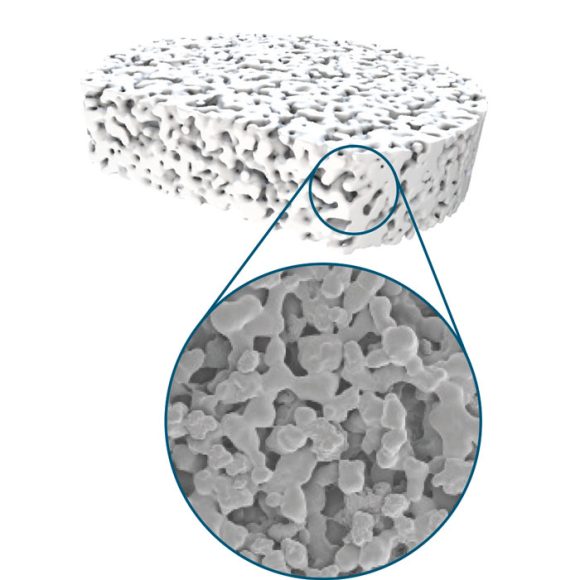Pore Size
Pore size and pore size distribution describes the dimensions of the holes within a Vyon® material. The range and average of these dimensions are both critical characteristics, influencing a product’s filtration efficiency, liquid handling, silencing performance and permeability
Porosity
This is a measure of void space within a porous material. Vyon® is available in a variety of porosities ranging from 25 – 65%. Product porosity is carefully selected depending upon the application. The porosity of the material will have an influence on the permeability, liquid capacity and strength of the porous plastic.
Permeability
Permeability is the capacity of a medium to transmit fluids or gases through the porous structure. Pore size and porosity both influence permeability. Greater pore sizes and higher porosities generally result in increased permeability. The permeability and consistency of permeability of a porous plastic are vital within venting, media support, and fluidisation applications, where not only whether a fluid can be transferred through the material, but how much fluid passes through, are key to product performance.
Careful material selection must be combined with controlled manufacturing to optimise pore size and porosity to produce a sintered porous plastic with the perfect permeability for your application.

Pores are a challenging characteristic to measure . Two main methods are in use that produce different values due to the intrinsic differences in their methodologies.
Pore size measurement by porometry
Pores are filled with wetting liquid and then expelled using compressed air. The pressure and flow measured during this process is used to determine the pore size distribution. The pore diameter using this method is determined by the size of the narrowest points within each through pore.

Pore size measured by Mercury Intrusion Porosimetry (MIP)
MIP utilises a pressurised chamber to force mercury into a sample of porous material. Mercury intrudes through the empty spaces (voids), filling the largest pores first and, as the pressure increases, permeating through accessible porous structure. By monitoring pressure, mercury volume and electrical resistance the pore size distribution within the material can be calculated. Pore diameter is determined by the entire profile of the accessible pore.

Pore size is determined by the full length and volume of the pore.